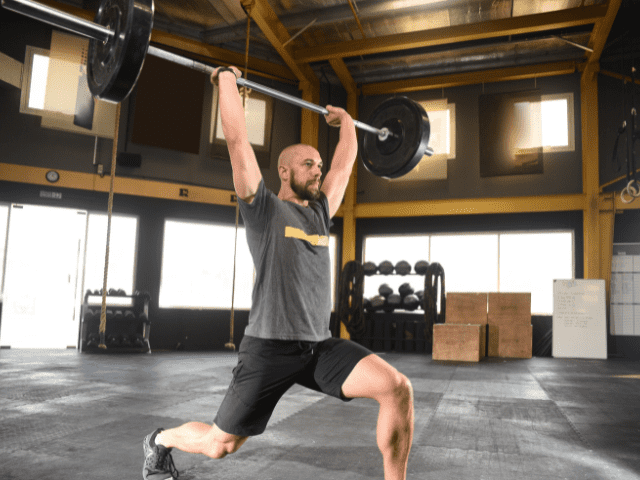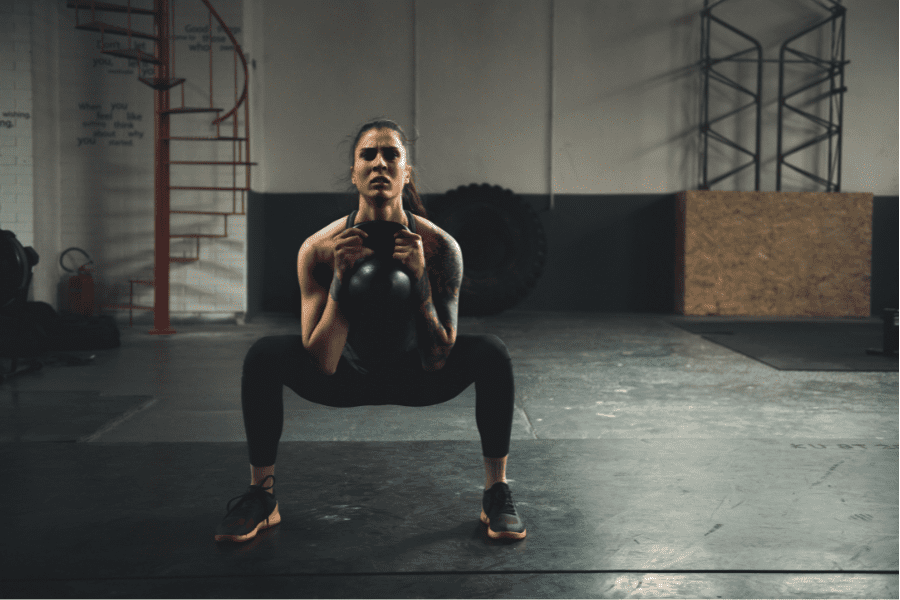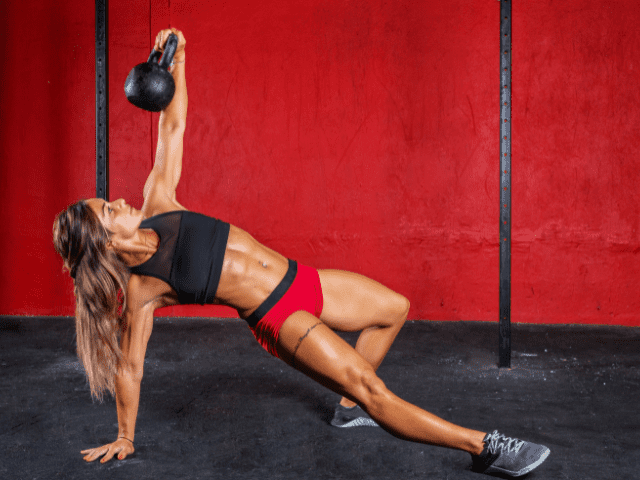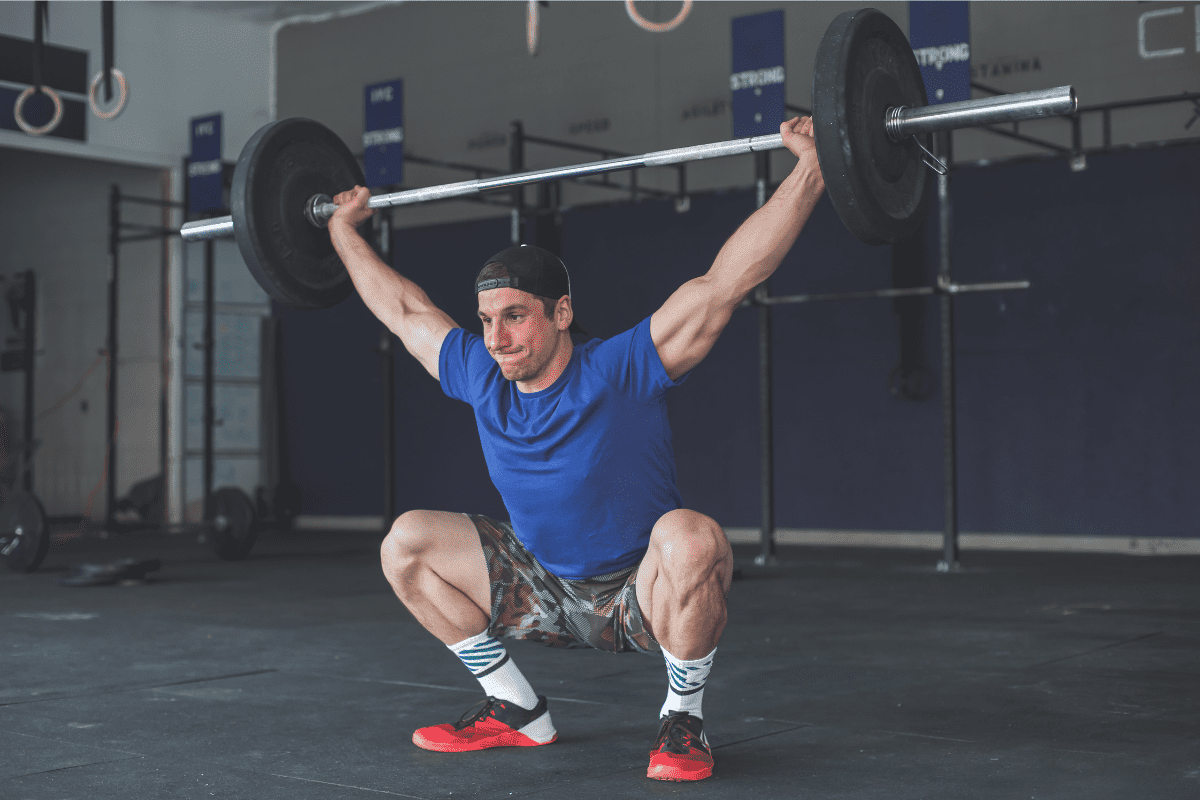6 Overhead Squat Alternatives (Improve Strength & Mobility)
Overhead Squats are one of my all-time favorite exercises. They demand mobility and stability from almost every part of the body. This makes Overhead Squats extremely effective as both an assessment movement and as an exercise that can improve both mobility and stability.
However, as amazing of an exercise as the Overhead Squat is, sometimes you may need an alternative for them.
Maybe you don’t have a barbell to use or maybe you’re not quite able to do Overhead Squats yet.
Whatever the reason, you’re in the right place. I’m going to give you my favorite Overhead Squat alternatives. Some are exercises that can help you progress toward being able to do an Overhead Squat and some that can work well as a substitution.
Alternatives for Overhead Squats
Overhead Squat with a PVC Pipe
If you’re simply not able to do Overhead Squats yet because of a lack of mobility, don’t worry, that’s actually more common than you might think.
There are many reasons that can affect your ability to do an Overhead Squat. It could be a lack of mobility in the ankles, thoracic or shoulders. Tight hips or tight lats could be the problem. Those are just a few examples.
While you’re working on finding and improving the limiting factors that are restricting you, try doing Overhead Squats with a piece of PVC Pipe (a broomstick can work great for this as well).
Because a PVC Pipe isn’t weighted, you can do the best you can each rep without worrying about trying to hold a 45-pound barbell over your head.
Dumbbell Overhead Squat

There are two different variations for Dumbbell Overhead Squats, single arm using one dumbbell and two arm using dumbbells in each hand. The difference between the two is substantial.
If you’re struggling with your shoulder mobility when overhead squatting with a barbell, you can give single-arm dumbbell overhead squats a try. Most lifters can keep a single dumbbell in the overhead position easier than with a bar.
On the other hand, Overhead Squats with two dumbbells overhead are actually quite a bit harder than with a barbell. This is because with a barbell you can use quite a wide grip, all the way to the edge of the sleeve if needed. The wider the grip, the more forgiving Overhead Squats are on your shoulder mobility.
However, with dumbbells, both dumbbells need to be maintained directly over the shoulders. Allowing them to drift wide makes them impossible to be able to hold overhead.
If you’ve mastered Overhead Squats with a bar and want to give your shoulder mobility and stability a new challenge, try using two dumbbells.
Barbell Reverse Overhead Lunge

Barbell Reverse Overhead Lunges can work both as an alternative for Overhead Squats and as a progression toward Overhead Squats.
Lunging while holding a bar in the overhead position is more forgiving for both ankle mobility and shoulder mobility. I like to use a combo of Overhead Squats with a PVC pipe and weighted Reverse Overhead Lunges with athletes while they improve their mobility.
Equipment Needed
- Barbell
- Bumper Plates (or Steel Plates as long as you don’t drop the bar after sets)
- Squat Rack (Not completely necessary as you can clean and press a bar onto shoulders if needed, but a rack is going to make this a whole lot easier, especially if lifting heavier weight)
Step-by-Step Instructions
- Unrack the barbell similar to how you would unrack a bar for a back squat.
- Step away from the rack to give yourself enough room to perform the movement.
- Slide your hands out and secure a wide grip on the bar. I recommend using a snatch grip width.
- Now press the bar overhead. Use your hips as with a Push Press if necessary.
- Lock the bar in place by elevating the scaps (extending the bar up) and engaging the lats (‘pulling the bar apart’).
- Step backward with one leg, giving yourself enough room to be able to drop into a lunge comfortably without feeling overextended.
- Keep the chest as upright as possible and drop the back knee to roughly one inch from the floor.
- Now drive through the heel and midfoot of the front foot to drive yourself back up tall.
- Repeat on the opposite leg and alternate back and forth until all reps have been completed.
Coaching Points
The narrower your grip on the bar, the more stress you’ll place on your shoulder mobility. If you’re struggling to keep the bar in place overhead – try widening your grip on the bar.
When you step out, make sure to keep the feet shoulder-width apart. If you’re feeling very off-balance in your lunge there is a good chance that you are stepping the lead foot directly in front of the back foot (essentially placing yourself on a tight rope).
Front Squat

If you’re simply looking for a squat variation to work strength, Front Squats can be a great alternative for Overhead Squats. They can still help you improve maintaining a vertical torso (which will help your Overhead Squats) while building leg strength.
Equipment Needed
- Squat Rack
- Barbell
- Bumper or Iron Plates
Step-by-Step Instruction
- Set the height of the squat rack so that the barbell is about 1-2 inches below the flexed elbow (Elbow pointing toward the squat rack prior to taking the weight off the hooks).
- One of the first considerations you are going to want to make is what grip you want to use to perform the front squat.
- Later in the article, I will talk about different grips and the reasoning behind each grip.
- For now, I am going to assume you are using a two-finger clean grip. (Most commonly used by athletes).
- Walk closely to the barbell and place it very close to your neck.
- Bring your elbows up and the barbell should be resting on the raised anterior deltoid muscles. You are now holding the bar with what’s called a “front rack position” (THERE SHOULD BE NO STRESS OR TENSION ON THE HAND OR WRIST TO HOLD THE BARBELL).
- With your front rack, lift the bar off the hooks. I recommend a staggered stance to lift the barbell off the rack.
- Take 2 steps back and set your feet slightly wider than shoulder width. Toes slightly pointed out.
- Maintaining a strong front rack, take a deep breath, and brace the core.
- Initiate the squat by hinging the hips back and bending the knees simultaneously.
- Descend into the squat with control until your hip crease is slightly below the knee.
- At this point, the core should be braced, the front rack strong, elbows up, and the lifter is ready to drive out of the “hole” and stand the weight back up.
- Keep a balanced foot with a strong arch, drive through the heels, and drive the hips until you are back at the top of the movement and ready for the next rep.
Grips
- Clean grip with 1 or 2 fingers. This is the most common grip used by Olympic lifters and athletes. This trains the specific position the bar would be in at the catch of a clean and therefore very advantageous for these athletes.
- Crossed arms. This is a common grip for athletes that want all the benefits from the front squat but may not have the flexibility or need for a finger grip.
- Straps. Using Lifting Straps allows the lifter to get the front rack position, engaging the upper back musculature, and takes a lot of stress off the fingers and wrists.
Coaching Points
By far the most common mistake with Front squatting (and most all compound movements) is improper form. Because the lift is very technical, uses the whole body, and requires patience and persistence, lifters oftentimes have incorrect form without realizing it, go up in weight too quickly, and may injure themselves.
Goblet Squat

Goblet Squat is another squatting variation that is loaded toward the front of the body. It’s a very beginner-friendly squat variation that allows the lifter to learn proper body positions while developing their strength.
Equipment Needed
- Kettlebell (Dumbbell can be used as well)
Step-by-Step Instructions
- Grab a kettlebell and hold it at chest level, cradling the bottom of the bell in both hands*.
- Stand with feet shoulder-width apart, chest out, lats engaged, eyes straight ahead.
- Before descending into the squat, fill the abdomen full of air and brace the core.
- Start the start by pushing the hips back first.
- Bend the hips and knees, keeping the chest up and knees pushed out until the thighs become parallel to the floor.
- Now push the feet through the floor and drive yourself back up to the starting position.
- Repeat for the designated number of reps.
Coaching Points
*It’s also acceptable to hold the kettlebell on each side of the handle.
As with any squat, the most important aspect of the movement is to keep the core braced to protect the spine and to maintain proper posture – chest out and lats engaged.
Turkish Get-Up

A Turkish Get-Up is a very different movement than an Overhead Squat. But, if you want another exercise that can help you improve both mobility and stability, Turkish Get-ups are an outstanding alternative.
Equipment Needed
- No equipment is needed if you plan to do your get-ups without an external load
- Kettlebell or Dumbbell (Or a Barbell if you really want a challenge)
- Yoga mat if the floor is too rough
- Enough space to move around comfortably. You don’t want to be doing get-ups and worrying if you’ll hit someone or something.
Step-by-Step Instruction
- Start by lying down flat on your back.
- Grab your kettlebell or dumbbell and bring it to a position ready to press it up.
- If you have the kettlebell in your right hand, bring your right leg to 90 degrees and keep your foot flat on the ground.
- Press the kettlebell up. Always look up during the Turkish get-up and keep the kettlebell locked out.
- Use your left hand and sit yourself up.
- Bridge your hips up like a glute bridge. Your left leg should be straight (5-10 degrees away from the midline) and your right leg should still be bent at 90 degrees.
- Sweep your left leg behind you and get onto your left knee.
- At this point, you should be in a half-kneeling position on your left knee, kettlebell pressed overhead, and torso upright. From here, stand straight up. You have completed the get-up.
- You will work your way back down to the lying position.
- Come back down to the left knee.
- Use your left hand to brace, untuck the left leg, and straighten it out.
- Now you should be in the bridge position with your left leg straight.
- Sit down on your butt, and use your left hand to ease your body back to the lying position.
- Bring the kettlebell back to the pre-pressing position.
- Complete all reps on one side before switching sides.
Common Mistakes
The most common mistake I see with the Turkish get-up is going too fast. To glean the full benefits of the movement, go slow, and take your time through each phase of the exercise.
Emphasize stabilization in the shoulder, glutes, and core. Keep the kettlebell locked out the entire time. If the elbow gets soft, you’re not stabilizing the shoulder, and maybe you’re going too heavy. In the bridge phase, pause, and squeeze the glutes and core. Emphasize locking in each phase.
Final Thoughts
Overhead Squats are an incredible exercise with a host of benefits. However, sometimes you may find yourself needing an alternative for Overhead Squats.
Hopefully, regardless of the equipment available to you and/or your lifting experience, one of the alternatives I’ve listed above fits what you were looking for.

